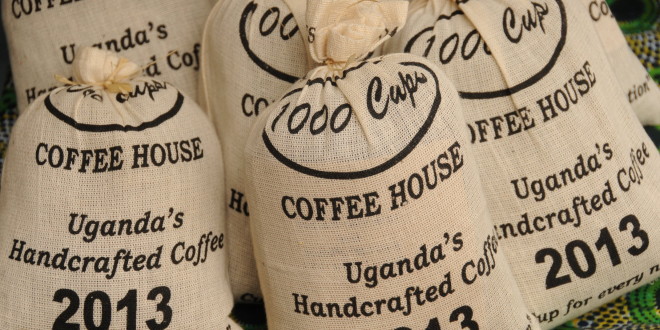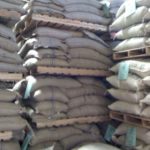|
Global exports in the first nine months of coffee year 2018/19 reached 97.28 million bags, an increase of 6.5 per cent compared to the same period one year ago, according to the latest report released by International Coffee Organisation (ICO). According to the report, shipments of Brazilian Naturals rose by 20.6 per cent to 31.12 million bags while Colombian Milds increased by 8.1 per cent to 11.36 million bags. Robusta exports increased by 1.4 percent to 34.45 million bags in October 2018 to June 2019 while Other Milds fell by 3.3 percent to 20.35 million bags. The decrease in Other Milds is driven by India, Mexico, and Costa Rica where exports decreased by 9.2 per cent to 4.69 million bags, by 11.8 per cent to 2.11 million bags, and by 12.3 per cent to 785,601 bags, respectively. In coffee year 2018/19, world production is estimated at 168.77 million bags, with Arabica output, estimated at 103.79 million bags, accounting for 61 per cent and Robusta, estimated at 64.98 million bags, representing 39 per cent of the total. Output in the five largest producers this coffee year would account for 73 per cent of world production. Brazil’s production in crop year ending March 2019 increased by 18.5 per cent to 62.5 million bags, which is reflected in the 20.6 per cent increase in its exports this period, reaching 37.13 million bags. Brazil’s Robusta production has recovered from the previous drought as evidenced by the growth in green Robusta exports. After declining by 72 per cent to 119,146 bags in the first six months of 2017, exports more than tripled to 505,912 bags in January to June 2018 and increased to 1.46 million bags in the first six months of 2019. Brazil’s exports of green Arabica in the first half of 2019 reached 15.86 million bags compared to 12.42 million bags last year. Vietnam’s production is estimated 1.3 percent lower at 30 million bags as adverse weather conditions affected the yield in crop year 2018/19. Despite the reduction, output in 2018/19 would be the second largest volume on record for Vietnam following 2017/18. Its exports in the first nine months of the year declined by 3.9 per cent to 21.1 million bags. Output from Colombia is estimated at 13.95 million bags in 2018/19, 1 per cent higher than last year. According to the National Federation of Coffee Growers, production from October 2018 to June 2019 reached 10.34 million bags, 1.1 per cent lower than the same period in 2017/18. However, exports from Colombia in the first nine months of coffee year 2018/19 amounted to 10.17 million bags, an increase of 7 per cent from last year. Its shipments of soluble exports have grown steadily in recent years. In 2015/16, soluble exports represented around 5 per cent of total exports, while in 2018/19 they represent around 6 per cent. Colombia’s imports in the first half of coffee year 2018/19 increased to 865,024 bags from 288,115 bags during the same period in 2017/18, with imports of green coffee accounting for 95.8 per cent of total imports this year. Indonesia’s production declined by 5.6 per cent to 10.2 million bags in its crop year ending March 2019. Shipments during crop year 2018/19 declined by 33.7 per cent to 5.15 million bags. In addition to the decline in output, steadily increasing consumption has reduced the availability of coffee for exports. Around 75 per cent of Indonesia’s green coffee exports are shipments of green Robusta, which reached 2.06 million bags in the first nine months of the coffee year compared to 2.44 million bags last year. The share of soluble in the total exports has increased from 5.9 per cent in 2010/11 to 20.7 per cent in 2018/19. Total soluble shipments in the first nine months amounted to 749,372 bags. Production in Ethiopia is estimated at 7.5 million bags, 0.6 per cent higher than in crop year 2017/18. While Ethiopia is the world’s fifth largest producer, it is the ninth largest exporter given the high rate of domestic consumption. In 2018/19, Ethiopia’s consumption is estimated at 3.8 million bags, which represents 50.7 per cent of its expected output. Exports in the first nine months of coffee year 2018/19 amounted to 2.47 million bags compared to 2.65 million bags in 2017/18. World coffee consumption is estimated 2.1 per cent higher in coffee year 2018/19 at 164.84 million bags with the largest growth in Asia and Oceania where demand rose by 3.6 per cent to 35.91 million bags. Consumption in Europe has slowed, increasing by 1.5 per cent to 53.97 million bags compared to an increase of 2.1 per cent in 2017/18. However, demand in North America grew by 2.2 per cent to 30.61 million bags. Consumption in South America increased by 1.1 percent to 27.27 million bags, in Africa by 3 per cent to 11.88 million bags, and in Central America and Mexico by 0.2 per cent to 5.21 million bags. Despite this growth, world production is expected to exceed consumption by 3.92 million bags, resulting in a cumulative surplus of 8 million bags over the last two seasons.
|
Global exports in first nine months of coffee year 2018/19 increase 6.5%







